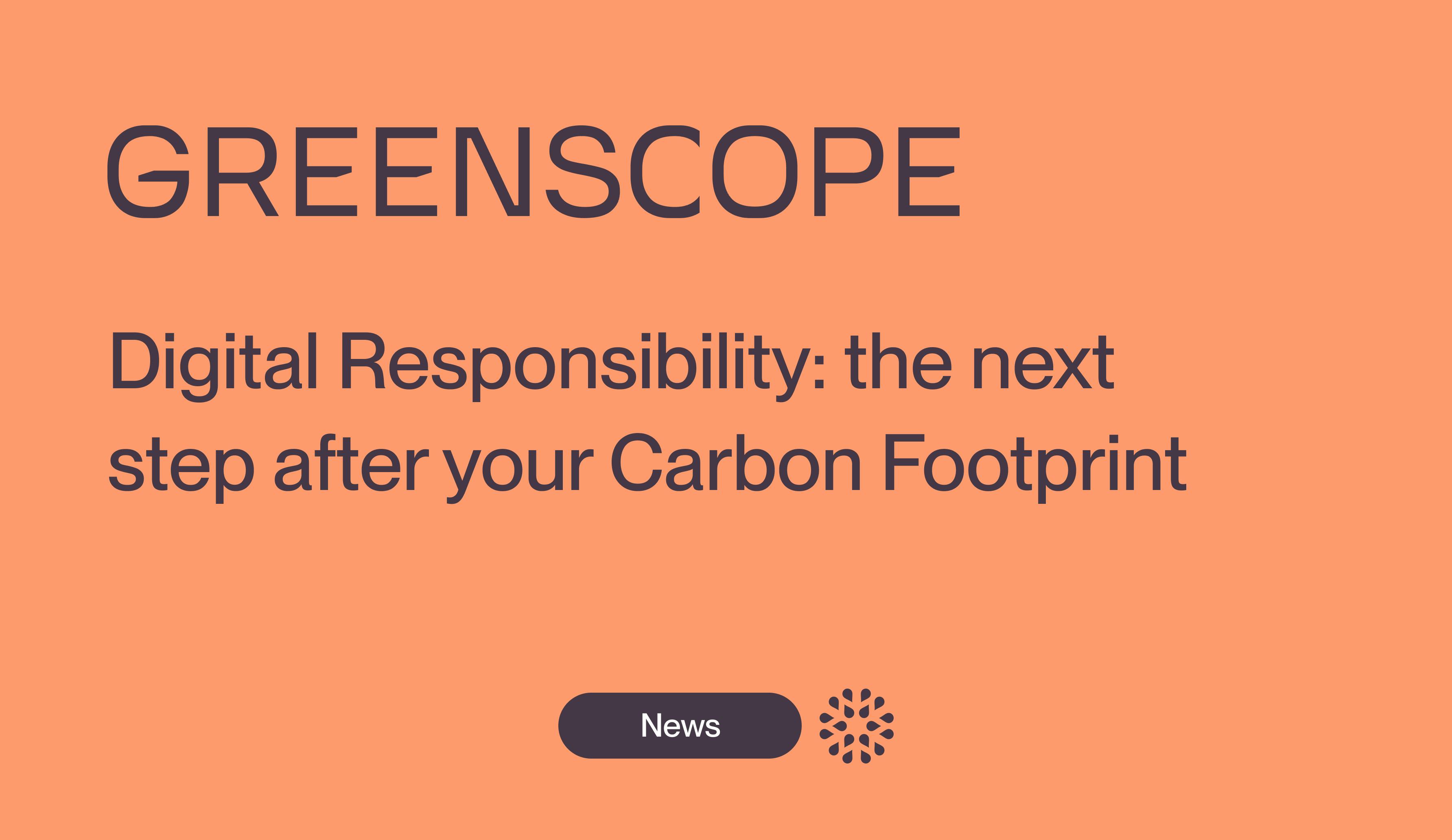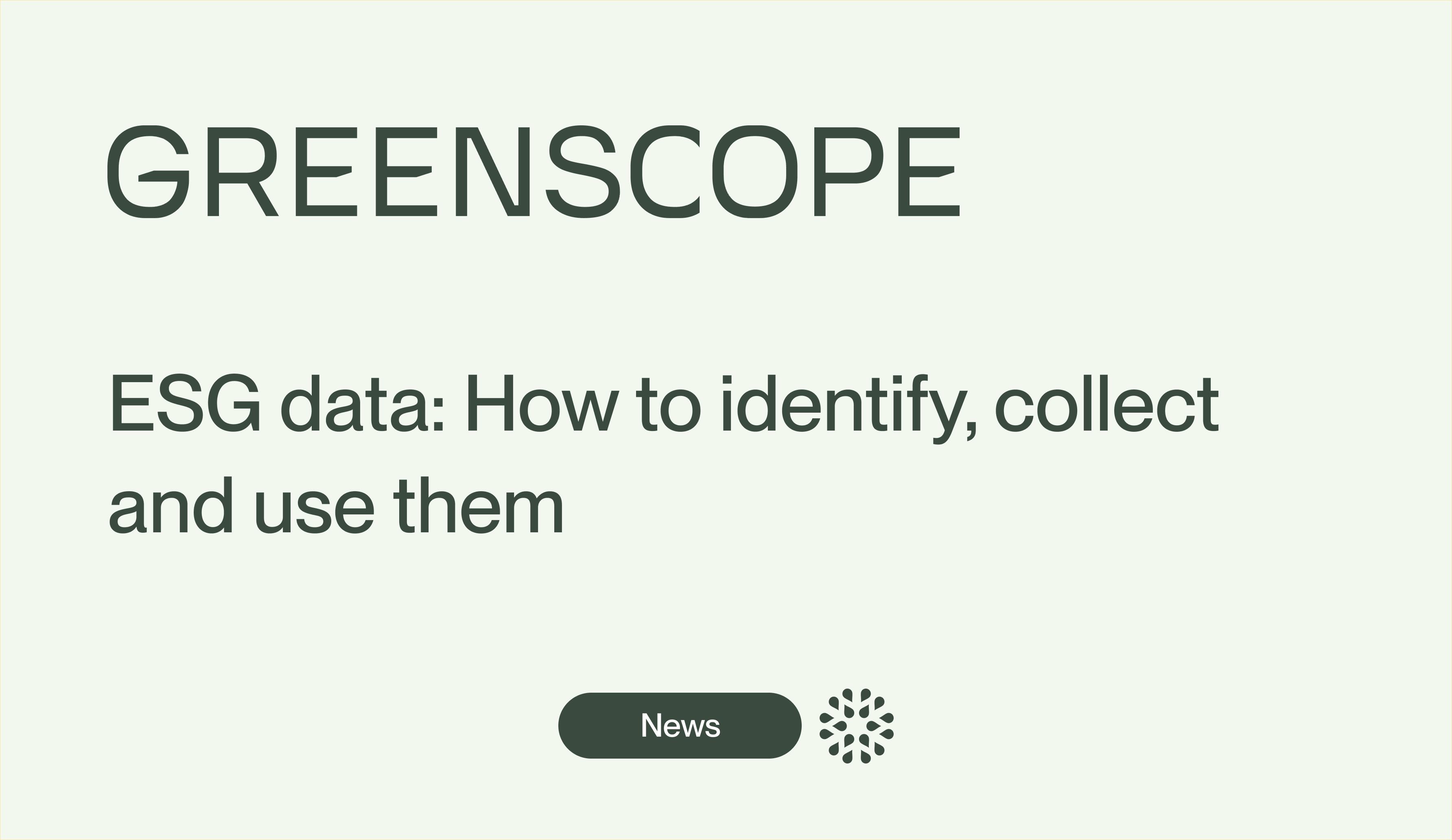45 ESG indicators for funds and asset management companies, and our guide to choosing yours
45 ESG indicators to structure your reporting and drive your commitments

ESG indicators (Environmental, Social, and Governance) have become essential metrics for funds and asset management companies, enabling them to assess and manage their sustainability commitments. Monitored at multiple levels - individual holdings, investment funds, or the management company as a whole - these indicators provide a structured view of ESG performance.
In this article, we offer 45 benchmark indicators covering various aspects such as CO₂ emissions, board diversity, or shareholder engagement. We also examine the relevance and limitations of these metrics that are at the heart of your ESG reporting, guiding you step-by-step in their selection.
What is an ESG indicator?
An ESG indicator is a quantitative or qualitative data point that can be collected at different levels (company, fund, asset management company...), then calculated and aggregated to the desired level. ESG indicators are used to measure an organization's performance in terms of sustainability and social responsibility. They enable the establishment of clear, quantifiable, and comparable objectives over time. They justify and guide an organization's strategy.
Before continuing to read, learn about ESG criteria.
Companies use ESG indicators to evaluate their environmental and social impact and guide their strategy. Funds and asset management companies use them before investing in a company, and also throughout the holding period of investments, to evaluate their ESG performance and to collaborate with them on their strategy evolution. By defining sets of indicators and calculating ESG scores based on these indicators, they aim to obtain comparable data to better evaluate a company's ESG performance relative to their sector, or to their portfolio.
15 ESG indicators related to the Environment
We have selected 15 environmental indicators favored by investors and companies, but there are many others. An ambitious ESG reporting should combine both generalist and specific indicators, tailored to the sector, ESG maturity, and environmental risks of the organization.
For example, the industry will focus on indicators related to waste, water, and energy consumption or emissions. Financial actors will instead monitor the carbon intensity of their investments, the alignment of their portfolio with the European taxonomy, and for funds, indicators specific to their investment thesis.
Quantitative indicators | Qualitative indicators |
|---|---|
• GHG emissions for scopes 1, 2, and 3 (tCO2e) • GHG intensity of the company's activities (tCO2e/unit of revenue) • GHG intensity of investments (tCO2e/invested amounts) • Energy consumption (MWh) • Energy intensity of the company's activities (MWh consumed / unit of revenue) • % eligibility and alignment with the European taxonomy (CA, CapEX, OpEX and by criterion of substantial contribution) • Water consumption (m3) • Waste production, including hazardous waste (t) • Releases of various (inorganic) pollutants, VOC emissions (volatile organic compounds) • Impacts on biodiversity (MSA.km²) ⇒ To go further: avoided emissions, dependencies on biodiversity… | • Obtaining labels and certifications, and critical examination of the labeling process • Alignment of the company's strategy with net zero objectives, the Paris Agreements... • Communication of various supporting documents by companies: GHG/Carbon footprint, LCA… |
To guide you in selecting your environmental indicators, we detail five references below.
GHG emissions for scopes 1, 2, and 3
Unit: tCO2e
GHG emissions quantify an organization's climate impact. Among the seven greenhouse gases (GHG), the three main ones are carbon dioxide (CO₂), methane (CH₄), and nitrous oxide (N₂O).
They are expressed in tCO2e (tonne CO₂ equivalent), a unit that integrates the global warming potential (GWP) of the different gases. Their measurement is based on a carbon footprint or methods such as the GHG Protocol, distinguishing three scopes:
- Scope 1: direct emissions
- Scope 2: indirect emissions related to energy
- Scope 3: other indirect emissions (e.g., travel, purchases...)
These assessments provide a snapshot of emissions, but their comparison is limited, among other things, due to methodological variations.
💡To remember
1. GHG emissions in tCO2e are a common ESG indicator and more comprehensive than CO2 emissions in tCO2.
2. An assessment integrating the three scopes provides a more precise view, but the weight of each scope in the total assessment can differ radically depending on the sectors.
3. Monitoring the evolution of this indicator allows setting reduction targets. However, comparing several organizations is not very relevant, except through proxy sectoral data. The use of sectoral proxies can thus compensate for a temporary lack of data and guide an ESG strategy effectively.
Energy consumption
Unit: MWh, kWh…
Energy consumption refers to the amount of energy used by a device, machine, or building. When aggregated, it represents the consumption of an organization.
A significant portion of GHG emissions comes from energy. To reduce its climate impact, an organization often needs to limit its consumption or change its energy source. Not all have the same effect on the climate: it is thus pertinent to distinguish between renewable and non-renewable energy and to break down the evaluation of consumption by type (fossil, nuclear, solar, geothermal, hydraulic...).
Energy or carbon intensity of the organization's activities
Unit: tCO2e/unit of revenue, MWh consumed/unit of revenue, tCO2e / invested amounts, MWh/invested amounts
Energy intensity is an indicator calculated from energy consumption and a monetary amount, generally revenue, invested amounts (for a financial actor), or GDP (for a country). It allows measuring energy efficiency, that is, how "energy-intensive" an organization is. In other words, it shows the amount of energy consumed to generate one euro of revenue, GDP, or one euro invested in a stake.
Eligibility and alignment percentage to the European taxonomy
Clarification: % of eligibility and alignment of revenue, CapEx, OpEx and by substantial contribution criterion
The European taxonomy classifies economic activities according to their contribution to the ecological transition. Its goal? Measure the "green" part of a company or investment, strengthen transparency and guide capital towards sustainable activities.
It is based on two concepts: eligibility, which indicates whether an activity is assessed by the regulation, and alignment, which means it positively contributes to the criteria defined by the Taxonomy regulation without causing harm to others.
The Taxonomy regulation requires organizations to assess the part of their revenue, CapEx, and OpEx eligible and aligned, overall and for each of the six substantial contribution criteria.
Alignment of the company's strategy with net zero goals, the Paris Agreements…
The only qualitative indicator of our focus, the alignment of the organization’s strategy with international commitments or standards is a key element of your ESG reporting.
Some examples of frameworks and standards:
- Paris Agreements
- Net zero objectives – for example as defined by SBTi with its SBTi Corporate Net Zero Standard, or internal to the organization.
- Sustainable Development Goals and United Nations Global Compact
Evaluating an organization on this indicator allows for a better understanding of how sustainability issues are integrated into its strategy and estimating its maturity on these issues. A qualitative indicator on the labels and certifications obtained by the organization will be complementary.
15 ESG indicators related to Social
Like environmental indicators, a complete ESG report will include both quantitative and qualitative social indicators.
While social indicators may initially appear more cross-sector than environmental indicators, they can also be adapted to the sector, the location, the priorities, and policies of the organization. For example, it would be relevant for a company established in a specific territory to highlight its relationships with the local economic and associative ecosystem, and for an industry player to accurately assess the accident rates in its factories.
Quantitative indicators | Qualitative indicators |
|---|---|
• Turnover rate (%) • Net job creation (hires - departures) • Share of interns and apprentices in the total workforce • Share of employees on temporary contracts (fixed-term, interim...) • Pay equity: > Remuneration ratios > Female/male pay equity • Inclusion: > Share of women in the company, women in management positions, women in executive or non-executive governance bodies > Same for workers from minorities > Same for disabled workers • Share of employees benefiting from training actions • Share of workers exposed to hazardous materials (VOCs - volatile organic compounds, etc.) • Company business practices: | • Value-sharing systems: profit-sharing agreements, founder warrants, free share allocations, value-sharing bonuses... and their implementation modalities • Relations with the local associative and economic ecosystem • Training policy • Awareness policy on Diversity & Inclusion issues |
To guide you in selecting your social indicators, we detail five reference ones below.
Turnover rate (%)
The turnover rate – or rotation rate – is a very classic indicator. It quantifies departures and arrivals within an organization, thus providing an indication of workforce renewal. Its analysis should, of course, be contextualized.
The turnover rate can be calculated on permanent or non-permanent staff (fixed-term, interim...).
Indicators related to pay equity and the Egapro index
The indicators used to assess **female-male pay equity** within an organization are numerous: the ratio between the highest and lowest salary, the average pay gap between men and women, the number of men and women among the top 10 highest earners...
In France, companies with more than 50 employees must report a combined indicator, the Egapro index, built from several of these indicators. Reported by nearly 29,000 organizations in France, this indicator thus has its place in your ESG reporting.
Share of employees on temporary contracts (fixed-term, temporary...)
Calculating the share of employees on temporary contracts (for example on fixed-term or temporary contracts) within an organization allows for a better understanding of the structuring of the workforce within the company.
Coupled with the turnover rate, information on employee qualifications, and other qualitative indicators (related to quality of life at work, for example), this indicator allows for an analysis of the company's responsibility and sustainability of HR policy. However, it should be noted that a sectoral analysis of these indicators is more than recommended, as some sectors structurally rely on short-term contracts, and certain types of jobs are much more affected than others.
Indicators related to diversity and inclusion
The issues of Diversity & Inclusion have now become essential within organizations. Monitoring indicators related to these issues will help evaluate the implementation of an organization's D&I policies: share of employees with disabilities, age pyramid within the company... Qualitative indicators will also allow organizations to develop policies in place to combat discrimination and promote the emergence of an inclusive work environment.
Value-sharing systems
Examples: Profit-sharing agreement, BSPCE, free share allocations, value-sharing bonuses... and their implementation modalities
Value-sharing schemes within the company are numerous. Thus, it may be relevant to identify which ones are in place within an organization and assess the proactivity of the management on these issues.
15 ESG indicators related to Governance
Ultimately, an ESG report would not be complete without indicators related to governance, both quantitative and qualitative. These indicators allow for the evaluation of an organization's transparency, ethics, and decision-making structure, key elements for measuring its commitment to sustainability.
Quantitative indicators | Qualitative indicators |
|---|---|
• Compensation for management positions conditioned on ESG performance or the inclusion of ESG in the strategy • Number of independent members in executive/non-executive bodies. • Indicators related to shareholder composition (diversity, employee representation...) • Human rights: proportion of invested companies exposed to controversies • Proportion of activities or investments exposed to controversial weapons • Proportion of activities in non-cooperative states in terms of tax policy (tax havens, etc) | • Integration of CSR in the board • Labels • Anti-corruption measures • Company's lobbying practices • Transparency on the company's remuneration policy • Integration of the company's purpose in its statutes • Exclusion policies (weapons, defense, tobacco, fur...) - indicator at the fund or management company level • Adherence to international initiatives (UN Global Compact, Climate Action 100+...) - company, fund or management company level depending on the initiatives |
To guide you in selecting your governance-related indicators, we detail five reference ones below.
Remuneration policy for positions of responsibility based on ESG criteria
The remuneration policy can play a key role in encouraging the pursuit of sustainable objectives, and the implementation of significant changes required to better align an organization's policy with its sustainability and responsibility objectives.
Collecting information on the existence of a remuneration policy linked to ESG criteria, particularly for positions of responsibility, and on the modalities of its implementation, will allow for a better assessment of the organization's commitment.
Number of independent members in non-executive bodies
A classic indicator of the 'Governance' criterion, the number of independent members (and the ratio between independent and non-independent members that it allows to calculate) in non-executive bodies provides a more transparent portrait of how the organization is managed.
You will benefit from further analyzing the composition of these governance bodies, for example by evaluating the proportion of women and employees.
Labels or certifications obtained by the organization
An organization's commitment to sustainability can lead to obtaining labels or certifications. These can pertain to specific practices, such as quality of life at work (e.g.: Positive Workplace label). Products can also be certified: Organic Agriculture label, European Ecolabel, Ecocert, etc. Finally, labels and certifications can also relate to the company's general commitment: B Corp, Ecovadis, LUCIE 26000, Engagé RSE...
Depending on the industry and sector, labels will differ, and for certain organizations, the labeling of a product will be more indicative of the organization's commitment than a global labeling or certification. It is therefore necessary to adapt your indicators according to these parameters.
Anti-corruption measures and transparency regarding lobbying practices
The anti-corruption policies implemented by an organization (controls, processes, and training) are an integral part of ESG reporting. Transparency regarding the organization's lobbying practices is also desirable, so it may be relevant to include in your ESG reporting one or more indicators to assess an organization's positioning on these topics.
Exclusion policies (weapons, defense, tobacco, fur...)
The application of exclusion policies is generally a specific indicator for financial actors: indeed, it frames their investment policy by designating sectors in which the financial actor refuses to invest.
The details of these exclusion policies are a good indicator of the fund's commitments. It will be relevant to include it in a fund of funds' ESG reporting, for example.
How to choose your indicators for ESG reporting?
The choice of your ESG indicators is crucial, as it durably guides your ESG reporting, and the signal sent to stakeholders from whom the data is collected: investments, subsidiaries, etc.
Follow our step-by-step guide to select the right indicators.
Selecting your ESG indicators in three steps
Adapt your indicators to the level of data collection: a factory, a subsidiary, an SME, or a startup do not have the same capabilities. If your reporting covers various organizations, combine a common base with indicators adapted to their size or sector.
Integrate quantitative and qualitative indicators, which are complementary for contextualizing the analysis. Favor a relevant selection over a large number of indicators with low coverage. Some indicators can still be monitored even if you anticipate a low coverage rate, to send a clear signal on your ESG expectations. Your objective: to collect quality ESG data.
Steering is essential: tracking the evolution of indicators allows trends to be identified, ESG progress to be compared, and your strategy to be adjusted. It also helps to better assess climate, social, or transition risks.
💡To remember: Design your reporting as an evolving and collaborative exercise. It should encourage your stakeholders to structure their ESG monitoring while remaining adapted to their context. The challenge? Finding a balance between exhaustiveness and feasibility.
What is the impact of ESG indicators on investment decisions?
ESG indicators increasingly influence investment decisions, requiring companies to meet the expectations of financial actors - and positioning companies in a proactive and favorable position. ESG assessment is now integrated into investment processes, both in the pre-investment phase and during asset holding.
During due diligence, a company with good ESG performance and few controversies is preferred because it reduces climate, regulatory, and financial risks. Investors also seek to seize the opportunities offered by a proactive CSR approach: easier access to ESG financing (impact funds, SRI, etc.) and better long-term performance.
In the holding phase, they closely monitor the ESG performance of their holdings, sometimes setting targets. Some adopt an active ownership approach, influencing decisions through their voting at the general meeting to push companies to better integrate ESG issues.
Greenscope supports you throughout your ESG reporting, from identifying your material issues to collecting your data, and selecting your ESG indicators. Contact us to find out more about our ESG reporting solutions.
Our latest articles

45 ESG indicators for funds and asset management companies, and our guide to choosing yours
45 ESG indicators to structure your reporting and drive your commitments

Responsible Digital: the next step after your Carbon Footprint assessment
Understand the importance of implementing a responsible digital approach after completing your carbon footprint assessment

CSR News - April 2025
Discover the key developments: ongoing projects, standards updates, new official documents.

ESG Data: How to identify, collect, and use them
Learn how to structure your ESG data to better drive your commitments and enhance your sustainable performance



